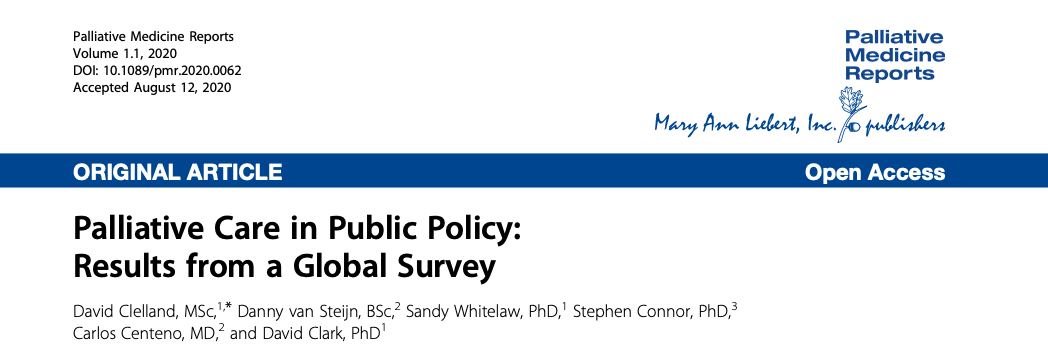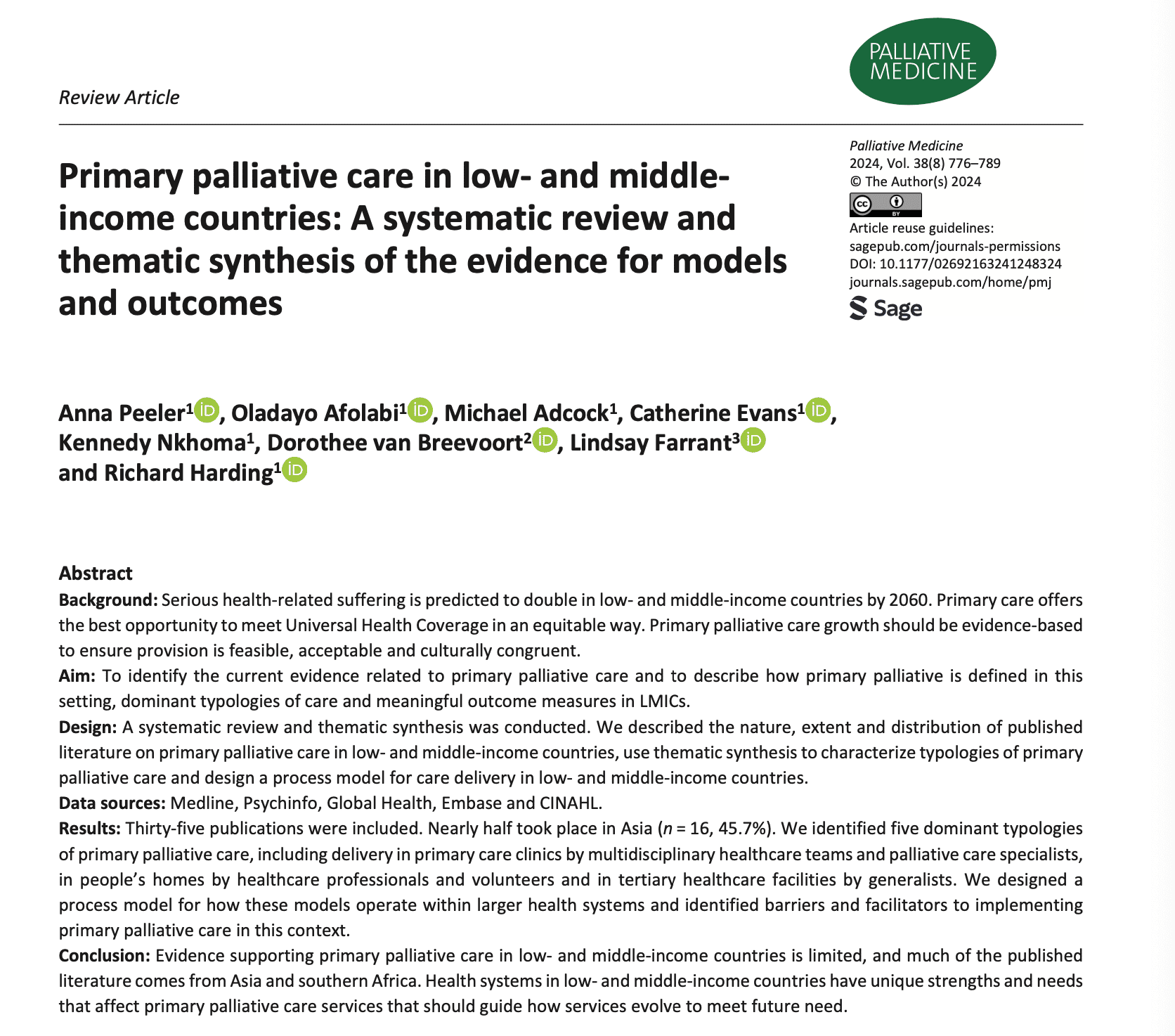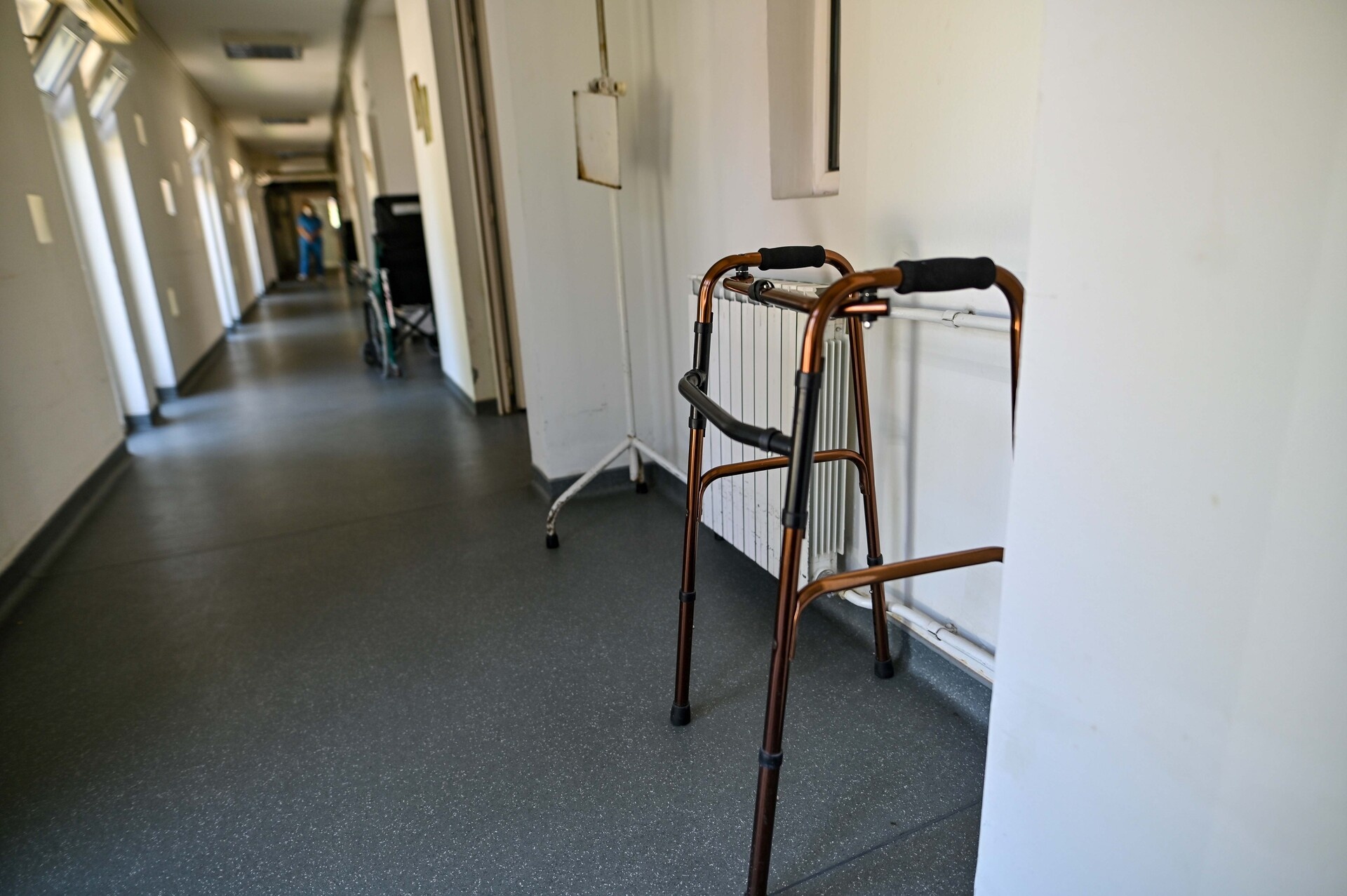Palliative Medicine Reports
Palliative Care in Public Policy: Results from a Global Survey
Article
16 Apr 2025
Background: Public policy has been a foundational component of the World Health Organization public health model for palliative care development since 1990. There is, however, limited evidence on the existence and character of palliative care policy...



